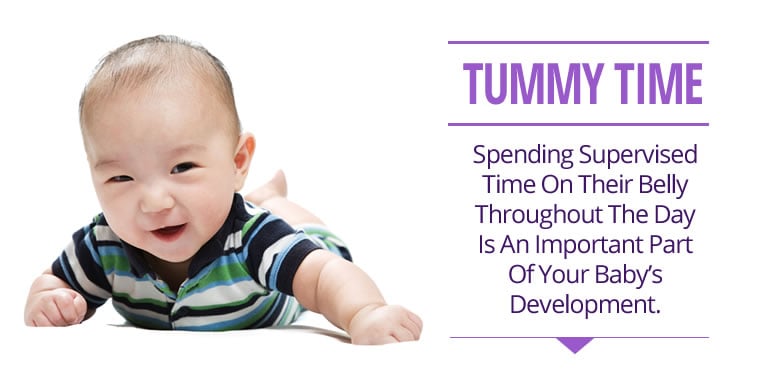
Spending supervised time on their belly throughout the day is an important part of your baby’s development. Tummy time helps your baby build strength in their upper body, promote trunk stability, and develop head control. These skills are crucial to later developmental skills like rolling, sitting, and crawling. Tummy time also encourages your baby to feel different textures on their arms, hands, and face to improve their sensory awareness, gain body awareness when shifting their weight on the floor, and develop hand-eye coordination when they move to learn what their little bodies are capable of doing. Tummy time is also effective in helping reduce flat spots on the back of the baby’s skull (positional plagiocephaly) and decreasing risk of developing positional torticollis (tightening of the muscles on one side of the neck that cause a head tilt to one side) which has increased since the “Back to Sleep” campaign recommended by the American Academy of Pediatrics in 1994 to reduce the occurrence of sudden infant death syndrome (SIDS).
Tummy time can begin as soon as you bring your baby home with as little as 30 seconds several times a day. A good way to remember to do tummy time in the first few months is right after each diaper change during the daytime hours. Work towards a goal of one hour a day by 3-4 months old in 15-minute increments after naptime and before feeding. Not all babies love tummy time and will often cry and resist it. Here are some tips to make it more enjoyable for both you and your baby.
If you are concerned that your baby may be exhibiting signs of positional plagiocephaly or positional torticollis, we recommend contacting your pediatrician to see if physical therapy is indicated. For most babies, a few visits to physical therapy is all you and your baby will need to get proper instruction in exercises, stretches, and activities you can easily perform at home.
ALWAYS REMEMBER—Back to sleep and tummy to play!



